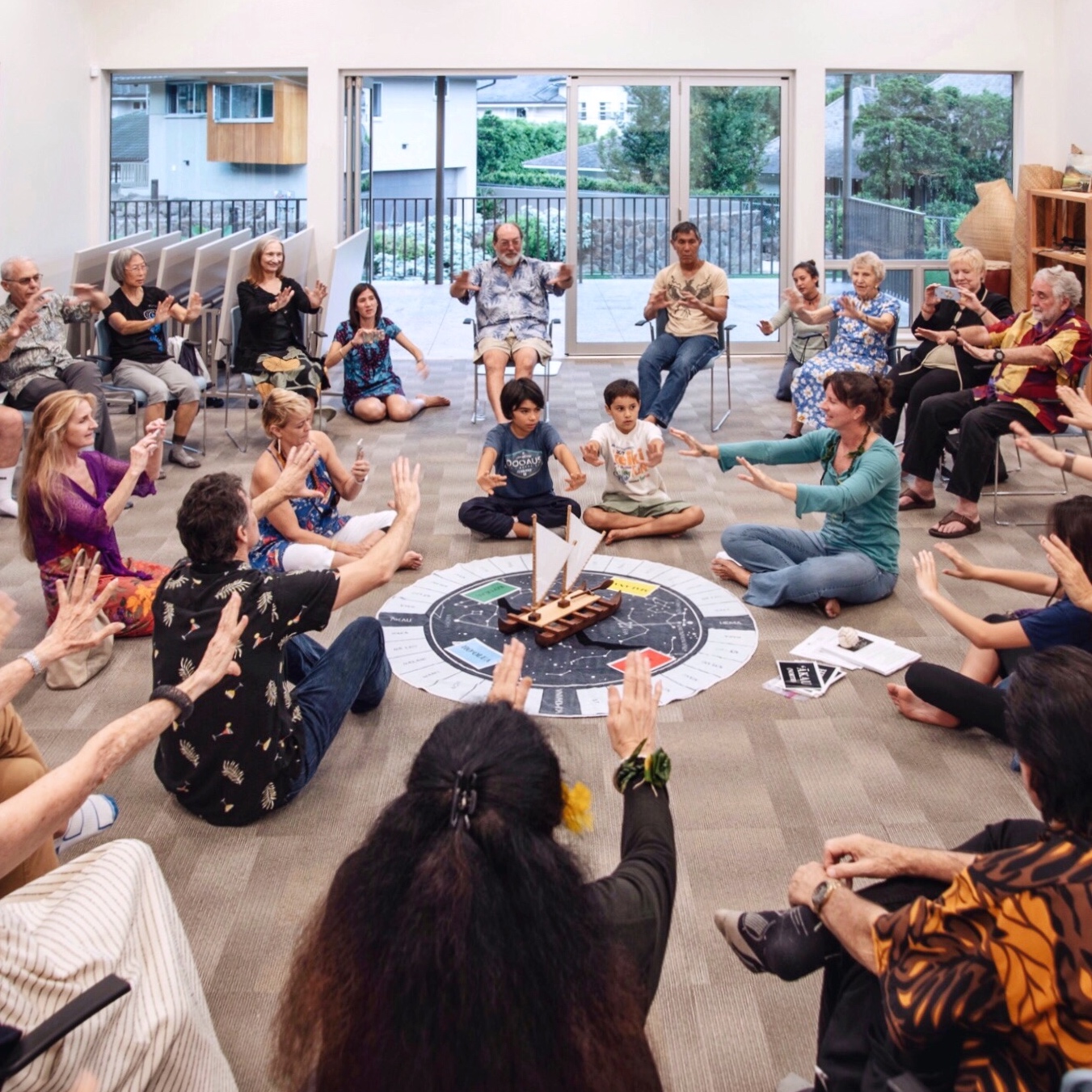Kalo: Hawaiʻi’s Green Wealth
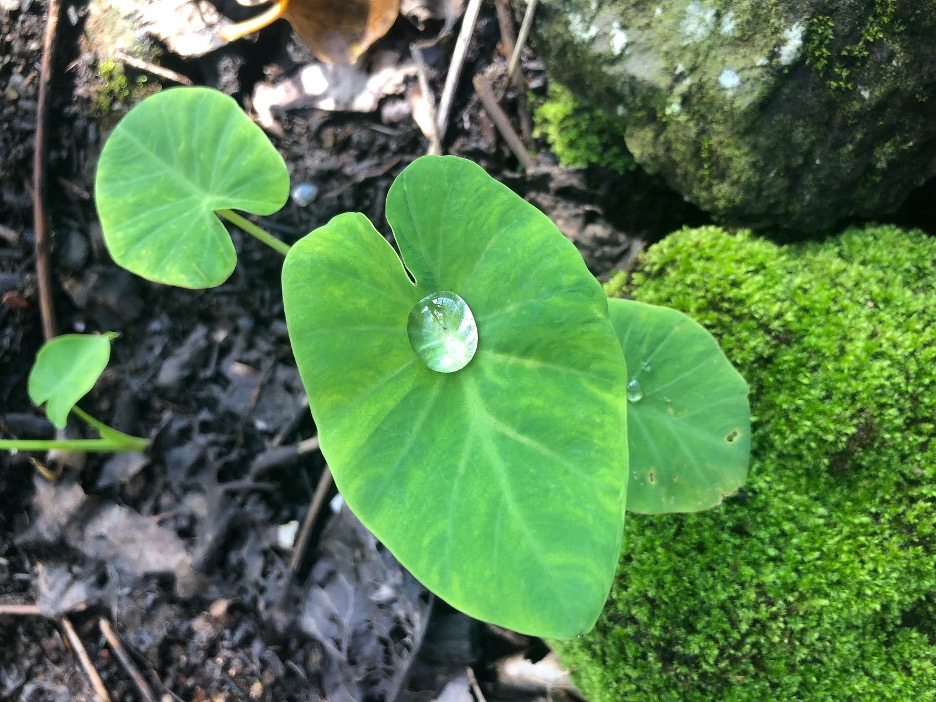
Ka iʻa lau nui o ka ʻāina
Big-leaved fish of the land.
Luʻau or taro greens
ʻŌlelo Noeʻau #1360
The Big fish has cross-cultural implications symbolizing prosperity and story-telling.
Historically, Mānoa Valley was an important source of kalo on O‘ahu. We know that the back of the valley was once planted extensively with lo‘i kalo and they could be seen from Kūkaʻōʻō Heiau on our site. As recently as the early 20th century (c. 1909), longtime Mānoa resident Miriam Woolsey Reed (daughter of Woolsey Poi Factory owner Annie “Maka” Woolsey Harris) recounted in an oral history that “…daily cooking was usually twelve bags of taro, each weighing about 125 pounds.” That’s 1500 pounds of poi a day, from just one of multiple producers in Mānoa! Thankfully there has been a resurgence over the last fifty years and kalo is being grown and enjoyed more and more.
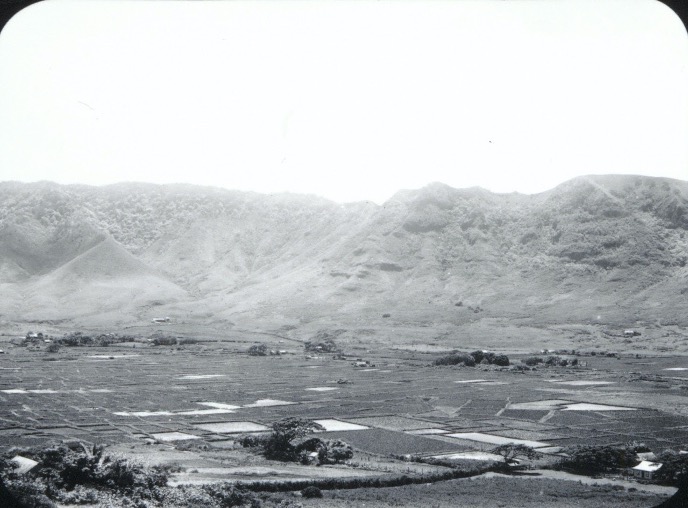
(Photo Courtesy Bishop Museum)
Although kalo or taro is grown and eaten around the world—from the Azores off the coast of Portugal in the Atlantic Ocean (where it is called inhame or coco), to Pakistan (where it is known as eddoe or arbi) and Nepal (where it is known as karkalo) in South Asia and Korea (called toran) and Taiwan (known as taro) in East Asia, and of course throughout the Pacific, nowhere else is it as culturally important than in Hawai‘i.
This is because kanaka maoli trace their genealogy to kalo through the moʻolelo of Hāloa. Hāloa was the first Hawaiian and the second child; his older brother, Hāloanakalaukapalili, was stillborn and buried. From that spot, the first taro (kalo) plant grew. It was Hāloa’s responsibility (kuleana) to always care for his older brother, Kalo, and in this way, man (kanaka), cares for the land (‘āina) as his ancestral family. Kalo, in turn, has been the primary staple of the Hawaiian diet.
He ali‘i ka ‘āina; he kauwā ke kanaka
The land is chief, man is the servant.
ʻŌlelo Noeʻau #531
Land has no need for man, but man needs the land and works it for a livelihood.
We recently asked some friends of Mānoa Heritage Center to share their love of kalo and how they built businesses around celebrating kalo and other indigenous canoe plants.
Maile Kamisugi is an MHC service learning volunteer and the owner of ‘Ulu and Kalo Bakery. We recently asked her how she started her business.
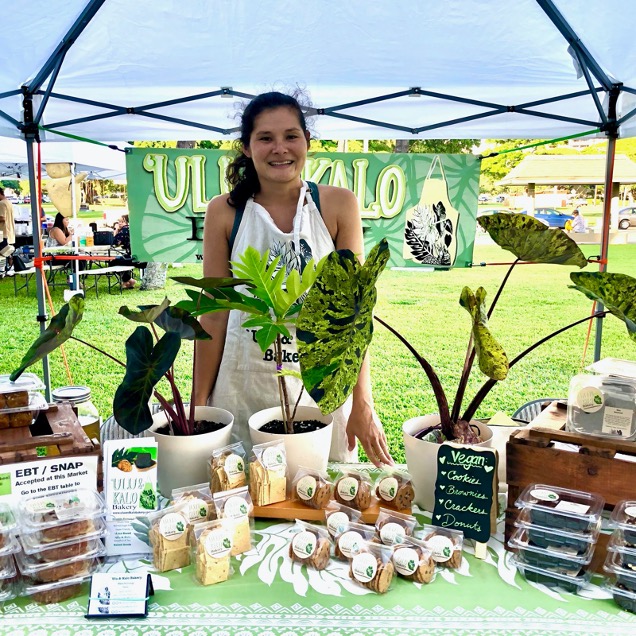
“I had to leave Hawaiʻi to realize how blessed I was and how blinded I was to the culture. I returned home from Portland with a newfound love for food and a passion for health. It was only natural that I began to eat more ʻulu and kalo since they are among the healthiest of starches. I attended events to learn more about canoe plants and began to understand their value and significance. This newfound appreciation was the start of my bakery. I am inspired by canoe plants to create desserts that are ʻono and nutrient-dense. I am able to connect to Hawaiʻi’s culture through growing, cooking, and learning about ʻulu and kalo which is very special to me.
A favorite way of mine to add kalo to my diet is by adding kalo paʻa to acai smoothies. Here is a basic recipe, amounts can be changed to your liking: 1 handful kalo paʻa, 1 handful berries, 1 cup plant-based milk, 1 banana, 1 acai packet.”
Brynn Foster is the founder/director of Voyaging Foods. She was a part of the first cohort for the Hawaii-based accelerator Mana Up Hawaiʻi, and is President of the Hawaii Farmers Union United—North Shore Chapter, leading the first all-woman Executive Board. She was a recent Delegate for the National Farmers Union United conference in Washington, is President of the Poamoho Agricultural Estates, and a co-awardee with the Hawaiʻi ‘Ulu Cooperative of an Atherton Family Foundation grant to scale the commercial production of breadfruit flour in Hawaiʻi. She has also been awarded “Island Innovator of the Year” by Hawaiʻi Venture Capital Association. We recently asked her how she started her business and why kalo is so important to her.
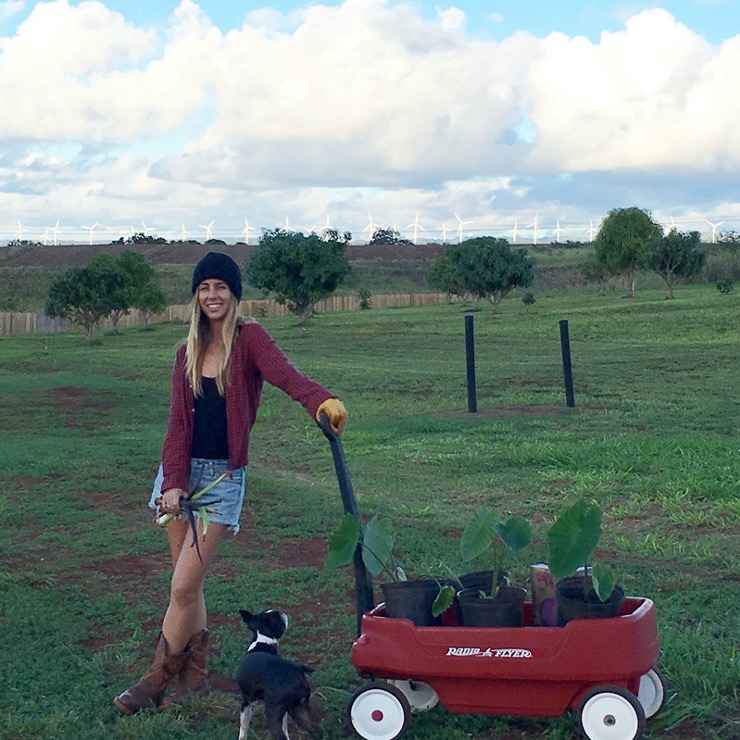
“I started Voyaging Foods as a need to find a better-for-you, gluten-free teething biscuit. There wasn’t anything without refined sugars or gluten and wheat in 2005 when I started. So I decided to make my own. I started off making taro powder from “sour” poi. I know that sounds crazy to ruin a good batch of sour poi but my toddler wanted to start chewing on cookies so I dried the poi and made it into a flour for cookies and teething biscuits. When I caught my mom eating the castoff teething biscuits it seemed like I should make cookies for everyone and not just babies!
I now understand I was being divinely led by my ancestors to find my way back to our cultural foods through that teething biscuit. I was led on a journey that keeps unfolding to this day. I went from learning about the history of kalo to planting it in my home to understanding that biodiversity in plants and kalo is a form of climate mitigation. We have a non-negotiable that we only source Hawaiian taro for our products. Our vision is a food sovereign Hawaiʻi where all 80+ varieties of kalo plants are represented in specialized regions, grown in homes, and used in daily meals.
I love kalo because it was like a light went on for me when I started eating and planting it. When kalo re-entered my life, the interconnection between land and people started to become more clear. I am also interested in other indigenous peoples and tribes’ creation stories. To understand that Hāloa/Kalo is a part of our creation story is extra special to me.”
Here is Brynn’s recipe for Dairy-Free Kalo Chocolate Pudding
Yield: 2 cups
Ingredients
- 2 cups coconut milk
- 4 tablespoons Taro Powder™*
- 4 tablespoons coconut palm sugar
- 1 tablespoon unsweetened powdered cocoa
- 1 tablespoon chia
- Pinch of Hawaiian salt
Directions
- Stir together dry ingredients into a bowl.
- Add 1 cup coconut milk to the dry mixture. Stir to combine.
- Heat the remainder of the milk in a double boiler. Stir in the combined dry ingredients mixture and cook for 5 minutes, continuing to stir.
- Pour into a bowl and refrigerate overnight.
Serve when cold, either plain or with cream.
*Voyaging Foods Taro powder can be purchased online at Voyaging Foods, or at Whole Foods (multiple locations)
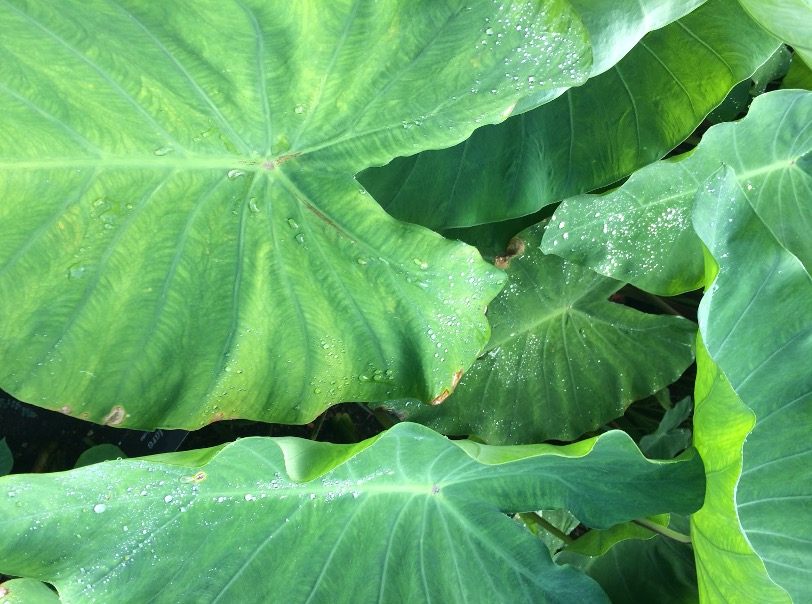
Where to get Kalo on Oʻahu
Hui Aloha ʻĀina Momona IG: @huialohaainamomona or @manaai Website: www.ainamomona.org
Located in Kahalu‘u, Hui Aloha ʻĀina Momona can provide raw ($4/lb) and cooked ($5/lb) kalo for sale on O‘ahu. Bulk pricing is available for orders of 100 lbs and up.
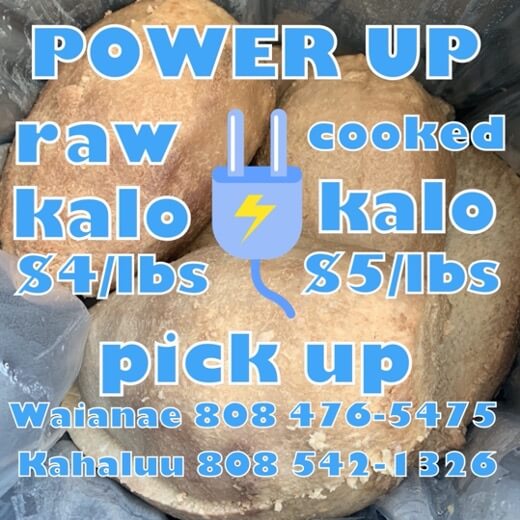
Ho‘okua‘āina IG: @hookuaaina or website: www.hookuaaina.org
Located at Kapalai in Maunawili (Kailua), Ho‘okua‘āina is continuing to harvest raw kalo for the community. Raw kalo is available for $3 a pound. Pickup is available Tuesday through Saturday from 1-5 pm at Kapalai. To ORDER RAW KALO, send a text to 808-351-1666 and include your name, total number of pounds of kalo wanted, and desired pick up date. Your order will be confirmed via text message.
Where to Find Poi on Oʻahu
Honolulu Poi Company Taro Brand Poi can be found at your local Foodland, Times, Tamuras, and Don Quijote stores.
He Mea ‘Ono Poi can be found at Farmers Markets, Times Supermarkets, and Tamuras in Waiʻanae.
Aloha Aina Poi Company can be ordered online or found at Waimanalo Market Co-op.
Online at Hanalei Taro & Juice Company IG: @hanaleitaro
Share your own kalo recipes, stories, and favorite local products below!
Bibliography
- Keaulana & the Woolsey Poi Factory: Interviews with Miriam Woolsey Reed and her brother George Woosley (1986). Transcript of an oral history with Charles S. Bouslog. Mānoa History Group, Mālama Mānoa, (n.d.). Retrieved from http://malamaomanoa.org/wp-content/uploads/Woolsey-Miriam-Reed-George-198.pdf. Date accessed May 11, 2020.
- Catherine Toth Fox. (2017, July 12). The Essential Guide to Taro: How Kalo is Eaten Around the World. Honolulu Magazine, December 2017. Retrieved from http://www.honolulumagazine.com/Honolulu-Magazine/December-2017/The-Essential-Guide-to-Taro-How-Kalo-is-Eaten-Around-the-World/

